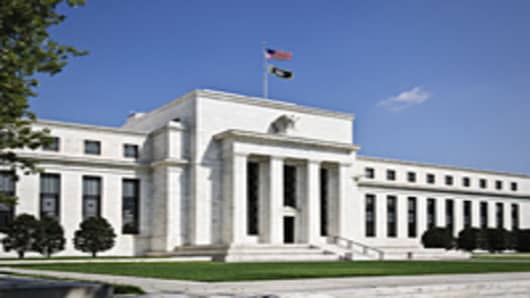Following the Federal Reserve’s decision to throw two football fields worth of dollars at the US economy all that has been achieved is a fall in unemployment from 10 percent to 9.1 percent, according to Philippe Gijsels, the head of research at BNP Paribas Fortis Global Markets.
The two football fields of money refers to the second round of money creation, known as quantitative easing, and the money that has been pumped into the US and global economy.
“Before the two football fields of money, US unemployment stood close to 10 percent.
Now it stands at 9.1 percent. This can hardly be called a great success,” said Gijsels in an interview with CNBC.com.
“What [Fed Chairman Ben] Bernanke is now indicating is that the economy and consequently the markets are on their own, and that is a major event,” he added.
Following five weeks of losses for stocks Gijsels is predicting more volatility and believes that in order to understand the current situation investors need to look at what happened in the summer of 2010.
“At the end of August 2010, everyone was talking about a double dip recession, even about a depression much like the US in the '30s, or most recently Japan, and most importantly about a Federal Reserve that was out of ammunition to stimulate the economy. No wonder that the deflation story was dominating the headlines,” said Gijsels.
Talk of, and the announcement of, QE2 changed all that and as the world began talking about inflation, not deflation, the risk-on trade began, he said.
“So it seems only logical that if we know that a big correlated move like this started at the start of QE2, we should look at markets with an above average attention when it is about to end? Nervousness and volatility are almost guaranteed,” said Gijsels.
With the US economy again looking shaky, Gijsels told CNBC.com that it will be different this time, because Bernanke is not about to pull the trigger on QE3.
“What has the 1.7 trillion dollars that has been pumped in the US and consequently in the world economy through QE achieved so far? True, inflation expectations have moved up and with it risky assets, which certainly has helped consumer confidence,” said Gijsels who questions what else has been achieved.
“The Greenspan put has been smoothly replaced by the Bernanke put. Do the most recent comments mean that this has come to an end? We will have to see. But it would clearly be a game changer,” said Gijsels.
“Expect more volatility over the course of the summer, until, hopefully, economic conditions once again improve towards the end of the year.
Being too short may prove to be a risky strategy as well, as a temporary solution to the Greek problem may create a relief rally.”
“Two things are clear in my mind. We will see a volatile summer. And we may be re-writing the rules of the market game once again. So please pay close attention” said Gijsels.



